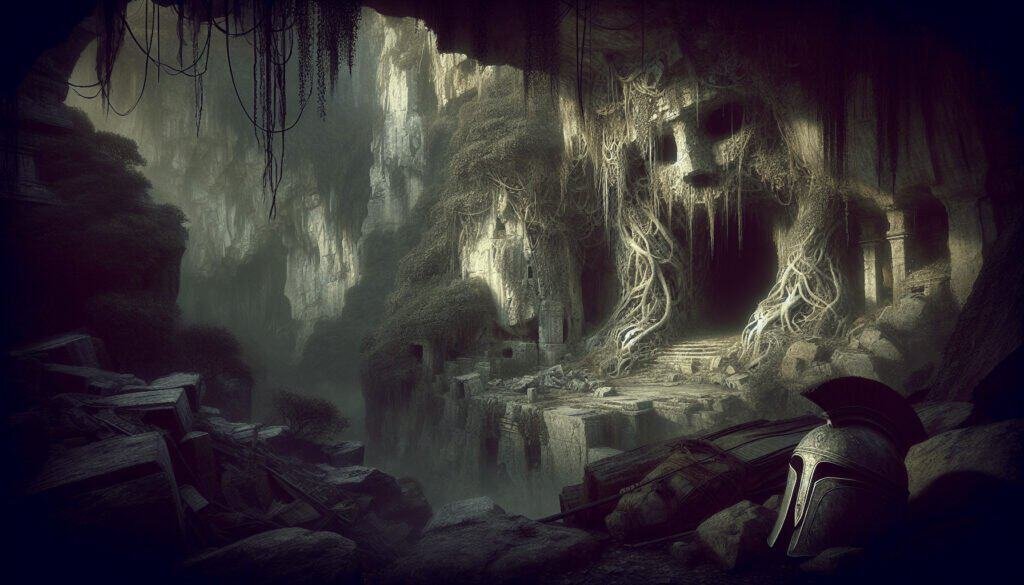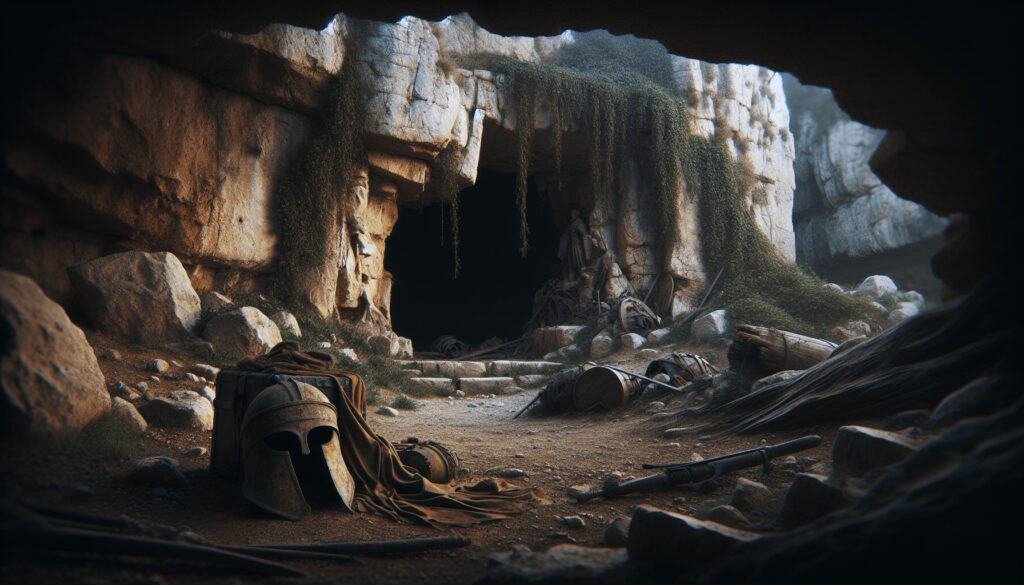What would you say if a cave whispered ancient secrets of justice and prophecy, beckoning you to unravel its mysteries?

The Forbidden Cave Plateau: An Introduction
In the heart of an uncharted landscape, the Forbidden Cave Plateau stands as a monumental testament to the human experience during wartime. It’s not just a location; it’s a canvas painted with the stories of those who lived through conflict, believed in prophecies, and sought justice in turbulent times. You might wonder why this obscure locale holds such significance.
A Glimpse into History
The Location and Its Significance
Nestled between jagged cliffs and thick shrubbery, the Forbidden Cave Plateau offers more than just scenic vistas. Historically, it has been a refuge and a battleground, housing secrets that transcend time and speak to the universal quest for justice. The plateau’s allure is as much in its aesthetics as in its socio-political implications throughout the ages.
The Impact of Warfare
Warfare often leaves behind shadows of despair but can also illuminate paths to truth and justice. As you contemplate the historical backdrop of this plateau, consider how ancient societies interpreted war and peace. Prophecies from these times have fueled religious fervor and inspired movements for justice, echoing through millennia.

The Archaeological Lens
Unearthing Artifacts
Archaeological dig sites around the Forbidden Cave Plateau have turned up astonishing artifacts, which paint a complex picture of life during times of conflict. Items such as clay tablets inscribed with prophecies, weaponry, and everyday utensils all give a sense of the lives lived there.
- Clay Tablets: Often inscribed with religious texts or prophetic utterances, these tablets provide a narrative thread weaving together past and present.
- Weaponry: The remnants of arms tell stories not just of destruction but also of the societal values surrounding honor and justice.
- Household Items: From pottery to tools, these artifacts showcase the daily lives of the people and how conflict shaped their reality.
The careful examination of these artifacts reveals layers of meaning and significance, offering tangible connections to abstract concepts like justice and morality.
Notable Archaeological Findings
Here’s a snapshot of key archaeological discoveries that have emerged from the plateau:
| Artifact Type | Description | Significance |
|---|---|---|
| Clay Tablets | Inscriptions of prophetic texts | Insights into beliefs and rituals |
| Weapons | Bronze and iron tools | Reflection of the culture of warfare |
| Figurines | Ceremonial objects representing deities | Understanding religious practices |
| Pottery | Everyday usage items | Social structure and daily life |
Cultural Context
Prophecies and Justice: A Historical Perspective
Prophecies during wartime often served as guiding principles, intended to provide hope amongst chaos and a moral compass to the people. People clung to these predictions, believing they foretold victories or justified their struggles. When you think about the narratives you’ve heard, consider how the characters in those tales reflect the community’s principles and aspirations.
Ancient Texts and Their Interpretations
The texts associated with this plateau are not merely archaeological remnants; they’re lifelines to the past. Scholars have undertaken comprehensive studies to interpret these writings, revealing layers of meaning underlying the surface.
- Interpretations of Justice: These texts often depict justice as divine, anchoring the community’s moral framework and justifying their actions.
- Symbols of Redemption: References to justice in the form of redemption reflect the hope for a better future amidst chaos.
The Role of Religion
Religion played a pivotal role in shaping the meanings associated with warfare and justice. People sought divine favor, and in times of distress, they turned to the divine for guidance. The plateau likely served as a spiritual haven, where leaders and common folk alike sought wisdom from the ages.
Theological Significance
Biblical Connections
The tantalizing connections between the Forbidden Cave Plateau and various biblical narratives compel you to consider the relevance of ancient texts in contemporary society. Scriptures speak of prophecies and divine justice, echoing similar themes found in artifacts from the plateau.
For example, the story of the Exodus embodies the quest for freedom and justice. The ancient people’s plight resonates with modern struggles, illustrating how prophecy has long been a vehicle for justice.
- Exodus Narrative: The yearning for liberation symbolized in the Exodus story reflects similar desires articulated on the plateau.
- Prophetic Voices: Prophets often emerged during tumultuous times, calling for justice and accountability, a theme echoed through various findings from the cave.
The Symbolism of Justice
Just as the ancient texts depict justice in varied contexts, the artifacts from the plateau also carry symbolic weight. They remain an enduring reminder that the thirst for justice is woven into the fabric of human existence.
- Justice as Restoration: Symbols of justice often represent not just punishment but also the restoration of balance, a theme that resonates strongly in both ancient and modern frameworks.
The Modern Perspective
Contemporary Relevance
Fast forward to the present, and you may be surprised by how the tales of the Forbidden Cave Plateau resonate today. The quest for justice continues, deeply woven into the very fabric of modern society, echoing past struggles and victories.
- Activism and Social Justice: Your awareness of civil rights, humanitarian efforts, and global justice movements often draws inspiration from historical narratives like those of the plateau.
Reflections on War and Peace
In today’s world, reflections on war and peace take on new shapes. You can look back at ancient societies and learn how they approached warfare’s moral dilemmas and the pursuit of justice, and find yourself contemplating how history has informed current ideologies.
Legal Systems and Justice
Just as ancient societies established guidelines for justice, modern legal systems strive to uphold similar values, often influenced by belief systems rooted in historical traditions. Think about how the concepts of fairness and equity have evolved, yet still echo the voices from the plateau.
The Prophetic Voice
Prophecies as a Call to Action
Prophecies are often seen as static predictions; however, they can also serve as powerful calls to action. The messages inscribed in clay tablets from the plateau resonate with varying interpretations, each shining a light on human experience.
- Calls for Accountability: Many prophecies highlight the importance of holding individuals accountable for their actions, an idea central to the establishment of justice.
How Prophecies Shape Societal Narratives
In understanding the role of prophecy, you’re also acknowledging how these messages shape cultural narratives. They influence everything from political movements to personal convictions.
- Cultural Influence: Prophetic words can stir entire populations, igniting movements and shaping destinies.
Conclusion
As you’ve journeyed through the stories of the Forbidden Cave Plateau, you may have unearthed more than just archaeological artifacts; you’ve uncovered layers of cultural and theological significance that resonate in modern society. The ancient echoes of warfare and justice remind us that the human experience remains intricately tied to the past.
In an ever-evolving world, you are part of a continuum that stretches back to ancient civilizations. The voices of those who sought justice resonate within you, urging a collective pursuit for equity, understanding, and truth.
So, as you reflect on the narratives spun in this magnificent plateau, remember that the quest for justice is timeless. The past continues to inform your present, guiding you as you navigate the complexities of life. Understanding these ancient connections illuminates paths to empathy and understanding, reminding you that justice is not merely an idea; it is a vital component of human existence, past and present.


